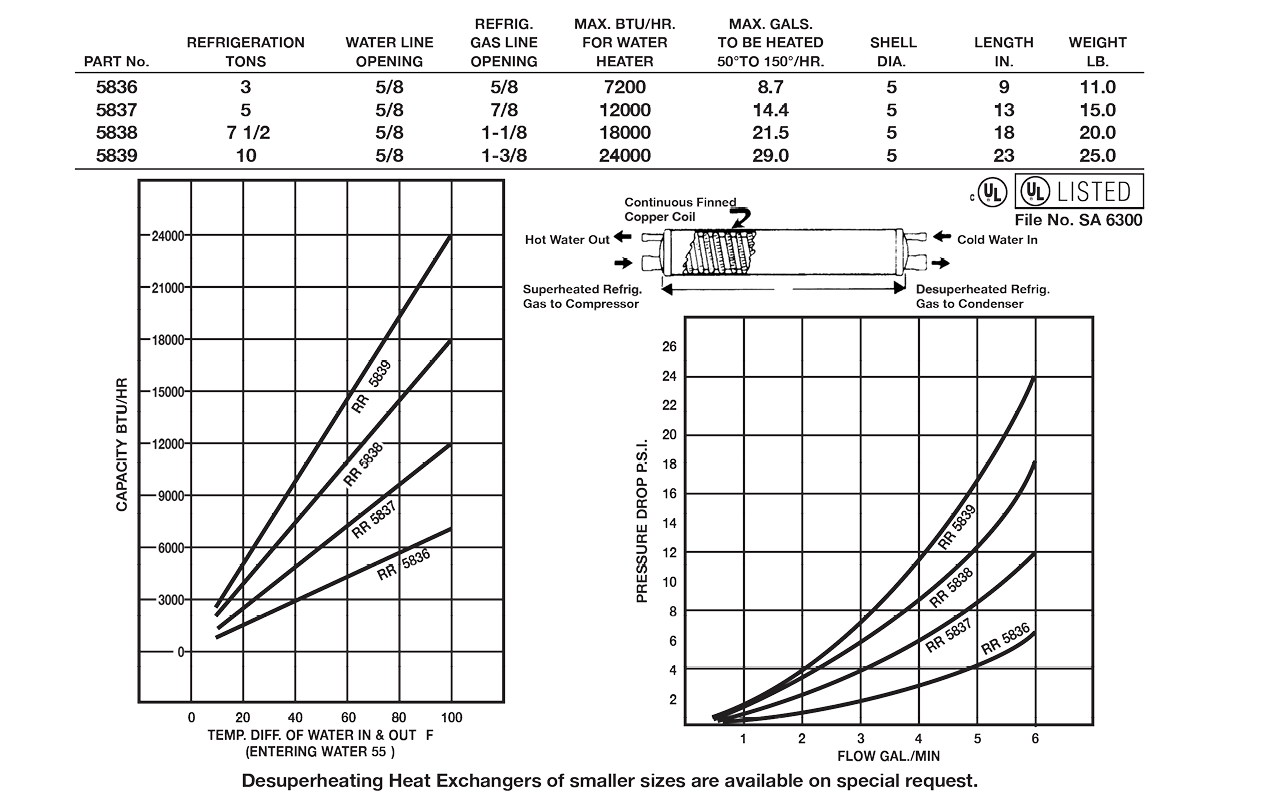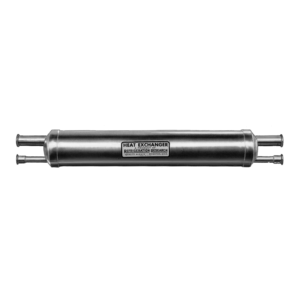Heat Exchangers – Desuperheating
- Description
- Specifications / Application Data
Description
DESUPERHEATING HEAT EXCHANGERS
SUPERHEATED REFRIGERANT GAS TO WATER
(For commercial refrigeration, heat pumps, milk coolers, air conditioning, etc.)
For many years it has been known that the commercial refrigeration compressor can be used to provide an abundance of water at 150°F (or even 180°F) while at the same time doing its intended refrigeration job and at a saving of perhaps 8 to 10% of the electrical power it would normally use.
This is accomplished by installing a heat exchanger designed for interchange of heat between super-heated refrigerant gas and water. SUCH A SYSTEM PROVIDES ONE OF THE MOST CERTAIN WAYS OF SAVING AN APPRECIABLE AMOUNT OF ENERGY AND AT COMPARATIVELY LOW INVESTMENT COST.
The heat exchanger is installed in the discharge line between the commercial refrigeration compressor and condenser, whether the condenser is of the water or air cooled type. The heat exchanger is designed to pick up not over 25% of the total rated load of the condenser.
In an ordinary commercial refrigeration system, about 30% of the work of the condenser is in reducing the superheated gas temperature to the condensing temperature. The balance of the work of the condenser is in condensing the gas to liquid and sub-cooling it.
Therefore, if the above mentioned heat exchanger is designed to pick up only the heat of the superheat, it is assured that only high temperature water will be provided. At the same time if the existing water or air cooled condenser does not have to handle the heat of superheat, it has additional capacity and the condensing temperature and pressure will drop causing the compressor to require less power.
Oversizing the heat exchanger would, of course, cause it to act somewhat as a water cooled condenser and the temperature of the water to be heated would be much lower.With the addition of this type of heat exchanger, it is also advisable to add an insulated hot water storage tank of ample capacity.
Usually these heat exchangers should be installed on commercial systems using automatic or thermostatic expansion valves. Installation must always be made by a qualified refrigeration service engineer. If installation is made on a capillary fed system, it should be under the direction of a refrigeration engineer having knowledge of capillaries.









